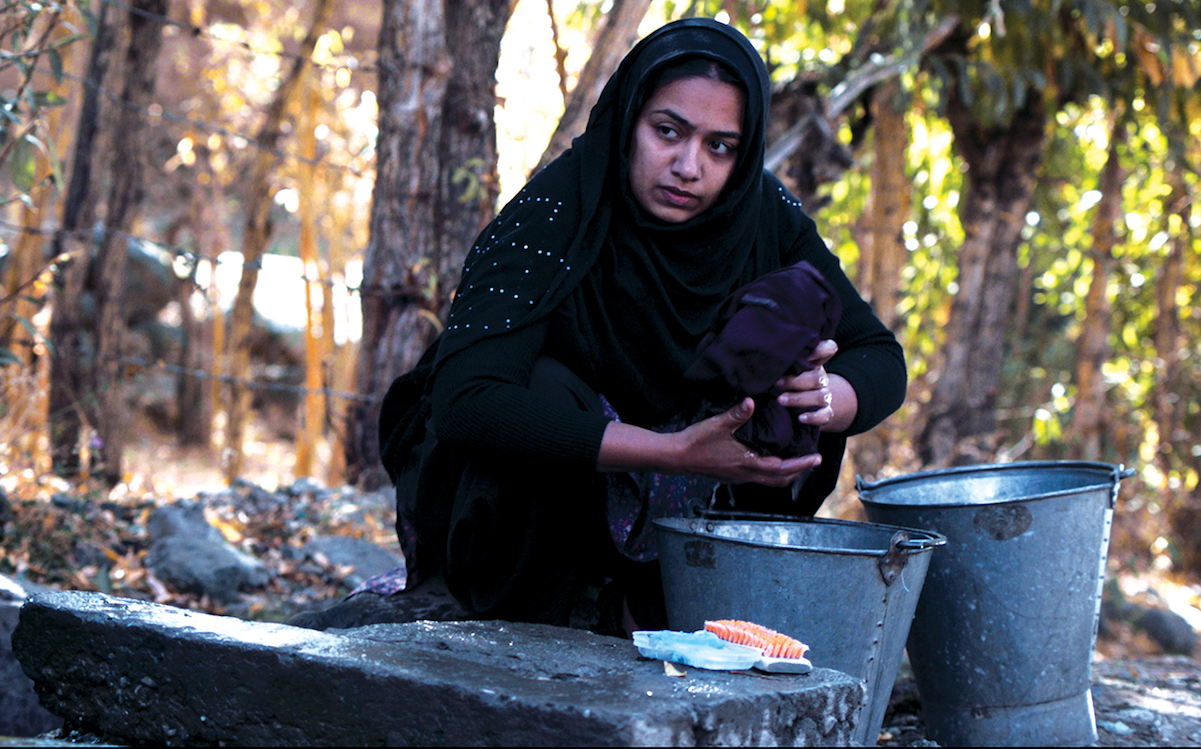
In 1947, the Indian subcontinent was divided along religious lines into two separate countries — India and Pakistan. A significant outcome of that division, among many others, was a dispute over the ownership of the state of Jammu and Kashmir. In the 70 years since there has been a continuous conflict over this land which has resulted in frequent occurrences of terrorism and civil unrest.
Over time, the armed conflict and continued violence in this region have destroyed the established structures in society. In Kashmir, there are many cases of men who have disappeared, but their deaths have not been confirmed. Their wives, commonly known as half-widows, live in a constant state of uncertainty. Families are left without breadwinners, leaving children and elderly family members vulnerable. Without a husband’s death certificate, a half-widow also cannot inherit his property or remarry, leaving her in a socially and economically precarious situation.
“Widow of Silence,” directed by Praveen Morchhale, is a film about the impact of conflict on women in Kashmir. The drama has been a part of many international film festivals.
The Seattle Globalist interviewed Morchhale, whose earlier film “Walking with the Wind” has won three national film awards in India, about “Widow of Silence.” Here’re some excerpts from this conversation. The responses have been edited for length and clarity.
Ekta Dokania: Tell us about “Widow of Silence” and how it came about.
Praveen Morchhale: It’s the story of a woman’s struggle to get her missing husband’s death certificate from the government and her strength in dealing with corrupt officials who are out to exploit the situation.
This film is based on many true stories from conflict-ridden Kashmir. In it, I am trying to portray the pain, struggle, suffering, resilience, and the indomitable spirit of Kashmiri half-widows and their children. Half widows are women whose husbands have disappeared, but their death is not confirmed. In Kashmir, just like any other conflict-ridden place, women and children are the most affected members of the community. These half-widows and their children live an isolated social life and face a lot of harassment, sexual exploitation, and humiliation.
I read a news article on half-widows around 20 months back and was very much intrigued by the word. I did a lot of research about these women and wrote the story based on many facts.
ED: What motivated you to pick this subject? Can you briefly explain the broader issues in the film?
PM: After conducting my research, I traveled to Kashmir and met a few half-widows. I realized that these women have no voice and in fact no one even bothers to talk about them. As a filmmaker, I wanted to illuminate the darker side of this situation. This film highlights the struggle and painful situation of half-widows in Kashmir.
ED: Why do you think this story needs to be told? What can viewers look forward to in this film?
PM: I feel this is an urgent and important subject which must be brought to the world’s attention. In this film, I have tried to realistically, without being verbose or preachy, put light on the social, political, and psychological problems faced by these women. It is expressed in a very subtle way. Audiences can look forward to a shocking exposition and this film will move them deeply. An absurd ending will certainly make them ponder.
ED: How have the audience and general public received the movie so far? Have you run into any roadblocks/opposition?
PM: Almost all the places from Asia to Europe to the U.S.A., “Widow of Silence” has been well-appreciated for its realistic storytelling, artistic, aesthetic, and minimalist approach. No, we did not face any roadblock or opposition. I think this is because this film does not talk about wrong or right or comment on the politically complex situation in Kashmir. It is a very personal story of a half-widow.
ED: Tell me about yourself and your journey to become a filmmaker.
PM: I was born in Central India. I am a self-taught filmmaker. I have been awarded ICFT Unesco-Gandhi Medal in 2018. [Editor’s note: The International Council for Film, Television and Audiovisual Communication is a UNESCO advisory group.] After a few years of making films and working as a theatre director, I was recognized for my debut feature film “Barefoot to Goa” (2013). Critics consider me as a new wave Indian cinema filmmaker. My cinema style is simple, subtle, and with a poetic touch. “Walking With The Wind” (2017) was my second film which screened at the competition as Camerimage, Sao Paulo IFF [International Film Festival], Fribourg IFF [International Film Festival], Mumbai Film Fest and many other film festivals. “Widow of Silence” has won three National Film Awards of India.
Seattle International Film Festival: “Widow of Silence”
Widow of Silence | India | 2018 | 85 minutes | Urdu with English subtitles
Movie Showtimes: Thursday, May 30, Friday May 31
Correction: An earlier version of this article misstated which film won three national film awards in India. That movie is “Walking with the Wind.” This article has been corrected.

